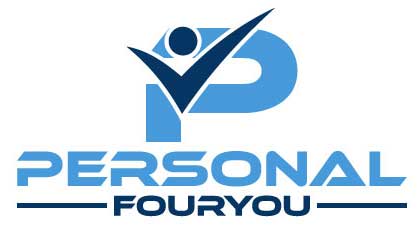
Mental Health Assessments For Minorities
Eine Bewertung hinzufügen FolgeÜbersicht
-
Gründungsdatum März 17, 2000
-
Sektoren Maschinen und Anlagenbau
-
Gepostete Jobs 0
-
Gesehen 66
Beschreibung des Unternehmens
Five Killer Quora Answers To Mental Health Assessment For Self-Harm
Understanding Mental Health Assessment for Self-Harm: A Comprehensive Guide
Intro
Mental health assessments play a vital function in understanding and resolving numerous psychological concerns. Among the vital areas of concern is self-harm, which refers to the intentional act of causing damage to oneself. This behavior often represents much deeper psychological distress, and proper assessment is essential for efficient intervention and support. This article offers a thorough expedition of mental health assessments for self-harm, illuminating their purpose, methodology, and significance in treatment planning.
What is Self-Harm?
Self-harm includes a series of behaviors that individuals participate in to manage emotional pain. This includes cutting, burning, or other methods of causing physical damage. Despite typical misunderstandings, self-harm is not constantly a suicide attempt; rather, it might function as a momentary relief from frustrating sensations, anger, or aggravation. However, individuals who take part in self-harm typically require professional aid.

Importance of Mental Health Assessment
1. Early Identification
A mental health assessment assists in the early recognition of individuals at risk of self-harm. Recognizing warning signs can lead to timely intervention, possibly avoiding future events.
2. Comprehending Underlying Issues
Self-harm typically originates from underlying Mental health Assessment for self-harm health conditions such as depression, anxiety, or trauma. A thorough assessment helps mental health specialists understand these source and tailor their treatment approaches appropriately.
3. Developing a Safety Plan
Through assessments, clinicians can team up with individuals to create a safety plan that deals with triggers and outlines coping methods.
4. Resource Allocation
A comprehensive assessment aids professionals in determining the most proper resources, treatments, and interventions needed for efficient treatment.
Types of Mental Health Assessments for Self-Harm
Mental health assessments for self-harm generally include a variety of approaches to gather comprehensive info about the individual’s mindset and history. These methods include:
Clinical Interviews
A clinician carries out an in-depth interview, discussing the individual’s feelings, behaviors, and experiences connected to self-harm. This enables for a nuanced understanding of the individual’s circumstance.
Standardized Questionnaires
Clinicians might use verified questionnaires to evaluate the seriousness and frequency of self-harming habits and associated mental health conditions.
Frequently Used Questionnaires:
- Beck Depression Inventory (BDI): Measures severity of depression signs.
- Generalized Anxiety Disorder 7-item (GAD-7): Assesses anxiety symptom seriousness.
- Self-Injurious Thoughts and Behaviors Interview (SITBI): Evaluates ideas and habits connected to self-harm.
Behavioral Assessments
Clinicians may observe individuals‘ habits in various contexts or examine patterns gradually. This assists in understanding triggers and contexts that lead to self-harming habits.
Risk Assessment
A vital part of the assessment, risk assessment examines the person’s likelihood of future self-harm or suicidal ideation. It involves checking out previous efforts, the lethality of approaches used, and existence of support systems.
Key Components of a Mental Health Assessment for Self-Harm
To ensure an accurate and efficient assessment, certain essential components need to be dealt with:
-
Clinical History
- Previous circumstances of self-harm
- Household history of mental health concerns
- Any existing mental health medical diagnoses
-
Current Context
- Recent life changes or stressors (e.g., loss, relationship issues)
- Drug or alcohol use
- Access to methods of self-harm
-
Psychological State
- Sensations of hopelessness, anger, or guilt
- Coping systems
-
Support System
- Identification of helpful relationships
- Existence or lack of professional assistance
-
Crisis Plan
- Outline of immediate coping strategies
- Contact info for crisis intervention resources
How to Approach a Mental Health Assessment for Self-Harm
When looking for a mental health assessment, individuals or their loved ones must think about the following actions:
Step 1: Recognize the Need for Help
Comprehending the severity and context of self-harming habits is the primary step towards looking for aid.
Action 2: Find a Qualified Professional
Pick a certified mental health expert knowledgeable in handling self-harm and related issues.
Step 3: Prepare for the Assessment
People need to be open, honest, and prepared to discuss their experiences, emotions, and habits.
Step 4: Follow-Up Care
Upon assessment conclusion, take part in open dialogue regarding treatment choices and follow-up procedures.
FAQs
What are the signs of self-harm?
- Inexplicable injuries or scars
- Using long sleeves in warm weather
- State of mind swings or withdrawal from social interactions
- Increased emotional distress
Can self-harm be dealt with?
Yes, with suitable intervention, self-harm can be resolved through therapy, counseling, and coping methods.
What should I do if I notice someone self-harming?
Encourage them to seek professional aid, use support, and prevent being judgmental.
Is self-harm a mental disease?
Self-harm is not a mental illness itself however rather a behavior that may show underlying mental health conditions.
Mental health assessments for self-harm are necessary tools in identifying people who might be having a hard time with emotional discomfort and hazardous habits. These assessments offer a structured approach to understanding the intricacies surrounding self-harm, making sure that people receive appropriate care and support. Through continuous discussion, awareness, and understanding, society can better equip itself to assist those in need.
Summary Table: Key Components of Mental Health Assessment for Self-Harm
| Element | Description |
|---|---|
| Clinical History | Previous self-harm occurrences, household history |
| Existing Context | Life stress factors, substance use |
| Emotional State | Feelings of hopelessness, coping systems |
| Support System | Recognition of supportive relationships |
| Crisis Plan | Immediate coping strategies, crisis contacts |
By fostering awareness of self-harm and promoting comprehensive assessments, society relocations more detailed to alleviating this common issue, eventually leading towards recovery and improved mental health for those impacted.

